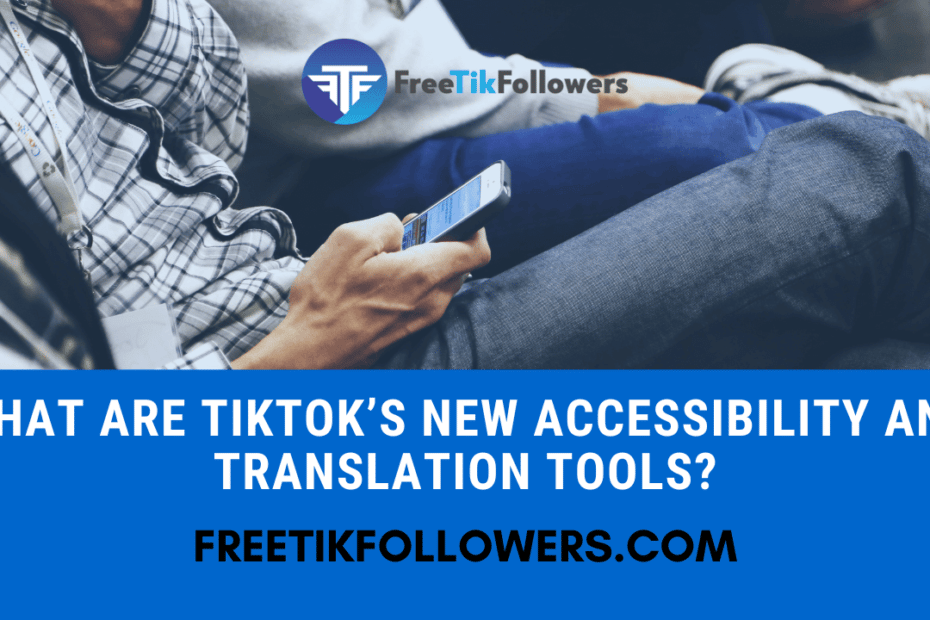If there’s one thing that is of critical importance in today’s social media age, it’s accessibility. Society is slowly becoming aware of issues that might not have come to light a decade ago, and those issues are affecting many potential social media users who want to be able to get the best experience out of their apps just like anybody else would. That’s why many social media apps are changing their accessibility guidelines and features in order to make sure as many users have a good experience as possible.
Of course, TikTok is no different in this department. Recently, the app introduced new features in order to cater to users who might struggle to read certain captions or to hear content creators. These new features are now part of a growing suite of TikTok accessibility tools and functionality, so if you’re just getting into TikTok, you’ll hopefully find that it caters to you whatever your personal needs might be. Here’s our rundown of the new TikTok accessibility and translation tools, as well as how you can use them.
Auto-generated captions

The first thing TikTok is adding in this latest update is the ability to see auto-generated captions on a video. Where users could add captions to videos they’ve made before, now TikTok will automatically generate those captions so that users who need captions will be able to see them even if the creator has chosen not to add captions to the video.
It’s easy to see how auto-generated captions will help users who might be hard of hearing to enjoy TikTok content a little more. Of course, auto-generated captions can be flawed in and of themselves, so here’s hoping that the algorithm TikTok has is able to come up with captions for videos without making too many mistakes.
At the moment, the auto-generated captions feature is limited to “select videos”, with TikTok rolling it out across the app in the coming weeks and months. If you don’t see the ability to add auto-generated captions on a video yet, then you might want to just wait a little while, as they’ll almost certainly be available on your video before long.
Caption and description translation

The other major accessibility feature being rolled out across TikTok right now is the ability to translate captions and descriptions for videos. Of course, creators will make videos in their own language, but using caption translation, you can now enjoy those creators’ intent without needing to speak their language. Tech is wonderful, no?
As well as captions and descriptions, the TikTok developers are also introducing the ability to translate text stickers, so that you will always know what a creator is talking about or trying to say with a video. TikTok says this feature will help to “overcome language barriers” and bring users of the app closer together.
Just like with the other accessibility feature we’ve talked about today, TikTok isn’t going to introduce this new feature immediately. Rather, you’ll start noticing it popping up on videos over the next few months. Right now, it’s only available on certain videos, but you should be able to access it in a more widespread fashion soon.
What other TikTok accessibility features are there?

If you head into your TikTok app, you will see that there are a number of other accessibility features that you can use to make your browsing experience that little bit more enjoyable. Even if you don’t need these features from an accessibility standpoint, they might actually be useful for you on a day-to-day basis, so make sure to give them a look even if you don’t think you need them. All of these settings can be accessed simply by opening up your TikTok app, navigating to the settings page, and hitting the “Accessibility” option. Let’s take a look!
- Animated thumbnail is a feature that lets you decide whether you want TikTok to show you animated thumbnails on content or not. If you turn this off, then you’ll only see static preview images while you’re browsing profiles, which should hopefully take the strain off your eyes a little (as animated thumbnails can sometimes be quite overwhelming).
- Remove photosensitive videos is a very important option if you’re someone who struggles with epilepsy or other light-sensitive issues. It lets you take videos out of your feed or your recommendations that could trigger seizures or otherwise upset photosensitive folks. This is an extremely important option to enable, so make sure that you think carefully about whether you want it on or not.
- Auto volume adjustment changes the volume of a video automatically so that it doesn’t blast audio at you. This can be extremely useful if you find yourself browsing late at night and want to make sure that a particularly loud video doesn’t take you by surprise. TikTok will adjust volume automatically, though, so it might not quite do what you want; make sure you adjust it back if you need to.
As you can hopefully see, these new TikTok accessibility features are going to be extremely valuable to certain users, especially those who struggle with being able to hear creators or those who don’t speak the dominant language of their favourite creators. The sky’s the limit when it comes to TikTok accessibility features, too; who knows what else the app might introduce in the future? Of course, you’ll hear about it here first!
